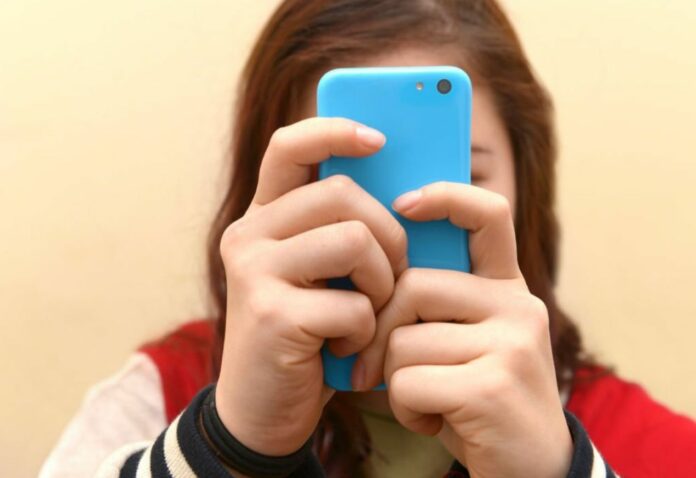Puberty is a complicated process that involves how different parts of the body and hormones work together. Recent studies have found an increase in girls starting early puberty, particularly during the COVID-19 crisis.
A mouse study presented today at the 60th Annual European Society for Paediatric Endocrinology Meeting suggests that exposure to blue light through the daily use of tablets and smartphones may alter hormone levels and raise the risk of premature puberty.
A longer period of exposure to blue light was linked to the early onset of puberty in female rats, who also displayed decreased melatonin levels, elevated levels of several reproductive hormones, and physical alterations to their ovaries.
The use of mobile devices that emit blue light has already been tied to children’s sleep patterns being disturbed, but current results imply that there may be additional dangers for fetal development and future fertility.
The growing use of blue light-emitting devices like tablets and smartphones has been linked to both children and adults sleeping less well.
This is believed to be due to the fact that blue light slows the nighttime rise in melatonin levels, the hormone that prepares our bodies for rest and sleep.
Overall, melatonin levels are higher during pre-puberty than they are during puberty. This is thought to help delay the start of puberty. Puberty is a complicated process that involves how different parts of the body and hormones work together.
Recent studies have found an increase in girls starting early puberty, particularly during the COVID-19 crisis.
Increased screen time, as that experienced during the pandemic restrictions, may be contributing to this reported rise, as the relationship between blue light exposure and reduced melatonin levels suggests. However, evaluating this in kids is quite challenging.
Researchers from Ankara, Turkey, Dr. Aylin Kilinç Uurlu and colleagues, used a rat model to examine the effects of blue light exposure on levels of reproductive hormones and the timing of puberty development. Three groups of six female rats each received either a normal light cycle, six hours of blue light, or twelve hours of blue light. Both groups were exposed to blue light, and both groups’ first signs of puberty started noticeably earlier. The longer the duration of exposure, the earlier the beginning of puberty. In addition, rats exposed to blue light saw morphological changes in their ovarian tissue, decreased melatonin levels, and higher levels of two particular reproductive hormones (oestradiol and luteinizing hormone). These alterations are all consistent with the start of puberty. Rats exposed for 12 hours also exhibited some evidence of ovarian inflammation and cell damage.
“We have found that blue light exposure,” comments Dr. Aylin Kilinç Uğurlu, “sufficient to alter melatonin levels, is also able to alter reproductive hormone levels and cause earlier puberty onset in our rat model. In addition, the longer the exposure, the earlier the onset.”
Dr. Aylin Kilinc Uurlu warns, “As this a rat study, we can’t be sure that these findings would be replicated in children but these data suggest that blue light exposure could be considered as a risk factor for earlier puberty onset.”
Although it is challenging to simulate in rats the same levels of blue light exposure as a child using a tablet, the age at which rats reach puberty is fairly comparable to that of humans, when taking into account the shorter lifespan of rats. Female rats go through similar hormonal and ovulation changes like humans during pre-puberty and puberty. Therefore, despite the study’s limitations, these findings are in favor of future research into the potential effects of blue light exposure on hormone levels and the start of puberty in young people.
Since this could have long-term effects on reproductive health and fertility, the team plans to look into the damage to cells and inflammation that was found after longer exposure to blue light. They will also see if the effects seen in the rat model can be lessened by using “night light” features on mobile devices that cut down on blue light.
“Although not conclusive, we would advise,” adds Dr. Aylin Kilinç Uğurlu, “that the use of blue light emitting devices should be minimised in pre-pubertal children, especially in the evening when exposure may have the most hormone-altering effects.”
Image Credit: Getty
You were reading: A Popular Habit Linked To Earlier Puberty Onset
